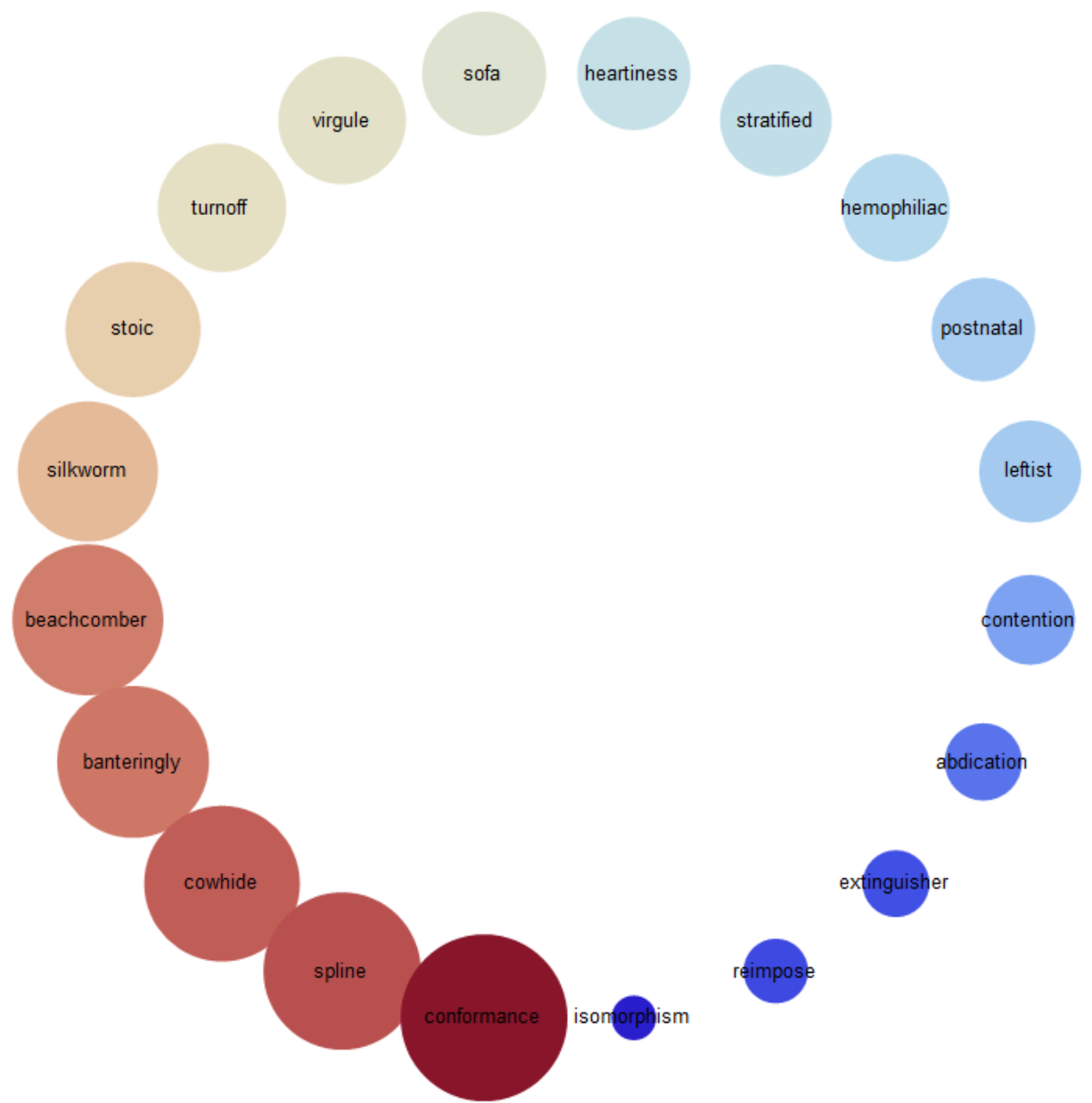Edit:
m = Sort[{{14, "extinguisher"}, {54, "virgule"}, {55, "turnoff"}, {51,
"sofa"}, {77, "beachcomber"}, {61, "stoic"}, {6,
"isomorphism"}, {34, "leftist"}, {84, "spline"}, {42,
"heartiness"}, {35, "postnatal"}, {41, "stratified"}, {66,
"silkworm"}, {95, "conformance"}, {38, "hemophiliac"}, {19,
"abdication"}, {13, "reimpose"}, {82, "cowhide"}, {78,
"banteringly"}, {26, "contention"}}];
rad = m[[All, 1]];
center = CirclePoints[50, 20];
Show[Table[
Graphics[{ColorData["ThermometerColors"][
Rescale[rad[[i]], MinMax@rad]],
Disk[center[[i]], (rad[[i]])^(1/2.1)],
Text[Style[m[[i, 2]], Black], center[[i]]]}], {i, Length@rad}]]
 Original answer:
Original answer:
Here is my attempt. It is not elegant. Note this is misleading!!
m = Sort[{{14, "extinguisher"}, {54, "virgule"}, {55, "turnoff"}, {51,
"sofa"}, {77, "beachcomber"}, {61, "stoic"}, {6,
"isomorphism"}, {34, "leftist"}, {84, "spline"}, {42,
"heartiness"}, {35, "postnatal"}, {41, "stratified"}, {66,
"silkworm"}, {95, "conformance"}, {38, "hemophiliac"}, {19,
"abdication"}, {13, "reimpose"}, {82, "cowhide"}, {78,
"banteringly"}, {26, "contention"}}];
rad = m[[;; -2, 1]];
center = CirclePoints[40, 19];
Show[Graphics[{RGBColor[0.6, 0, 0],
Disk[{0, 0}, (m[[-1, 1]])^(1/1.3)],
Text[Style[m[[-1, 2]], Black], {0, 0}]}],
Table[Graphics[{ColorData["ThermometerColors"][
Rescale[rad[[i]], MinMax@rad]],
Disk[center[[i]], (rad[[i]])^(1/2.1)],
Text[Style[m[[i, 2]], Black], center[[i]]]}, Frame -> True], {i,
Length@rad}]]









mthey are not ordered but I think one can order them usingSort$\endgroup$